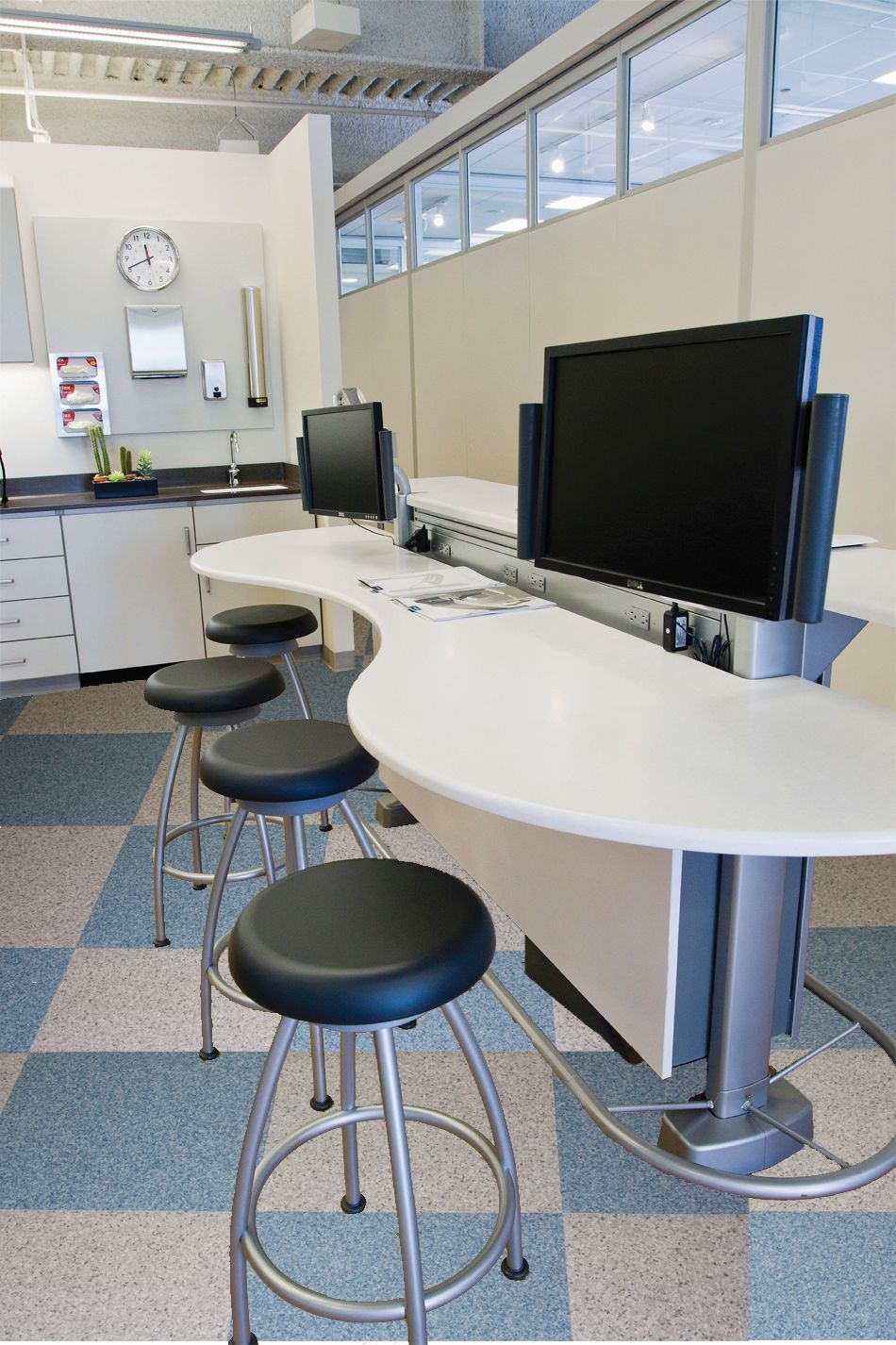
How often do you think about lab flooring? As a clinician, you may think about flooring when your back or feet hurt after a long day of standing or if there’s a spill or some other risk of contamination, perhaps even more if the static electricity damages an expensive piece of lab equipment in the lab. Then the flooring becomes extremely important. As a flooring company that works with hospital facilities managers and lab management professionals, we typically ask many questions before recommending. These questions range from operational and installation to aesthetics and maintenance. When you’re thinking about installing flooring for labs, make sure you ask the following questions.
Operational
Do you require a particular slip resistance?
You don’t want anybody to slip in your lab, so naturally, you want to select a tile with slip resistance. Some environments may, however, need greater slip resistance. If your facility requires a higher level of slip resistance, then you will want to steer clear of slick materials like epoxies. Seek out products that provide more secure footing, such as tiles that utilize a coin-top texture.
Do you require comfort, ergonomic, or anti-fatigue properties?
Some floorings are better for humans to stand on for long periods of time than others. For example, epoxies are hard. Same holds true with glued-down vinyl flooring. Unfortunately, the more ergonomic and comfortable the floor, the higher the cost. Going the extra mile can provide a return on investment in that lab or clean room because workers who are more comfortable will be more productive and miss less time due to standing-related injuries like plantar fasciitis. Fewer injuries and more comfortable work conditions also improve staff retention.
What are the VOC and particulate requirements of the room?
Some flooring for labs and clean rooms is better than others. For example, epoxies and types of vinyl are usually preferred. Clean rooms and labs will have their standards to adhere to, and that’s something the flooring dealer should review with customers. For example, some products generate particulates when you scrub, requiring a sealant to prevent it.
Do you require any chemical resistance?
As a lab or clean room, it’s possible your facility might use chemicals that impact which material you can or cannot use. Having a detailed conversation about your operation is critical to making a wise selection. If there are chemicals in your work environment, vinyl may be a good choice because it is resistant to many chemicals. Rubber is also suitable for chemicals like chlorinated solvents. If possible, get a sample of the flooring that you are considering and test it against the substances that you have in your lab.
Do you require the floor to be portable for reconfigurations or future moves?
Expansions, downsizing or relocation to a new facility are just some of the reasons why companies want a flooring they can move. When you choose a glue-down option for flooring, you sacrifice portability. Glued down tiles can’t and shouldn’t be removed and used again. There are flooring products available that utilize an interlocking system so flooring can be moved should your lab, or clean room need move to another location.
Installation
Does the underlying concrete pass moisture tests?
If there is concrete beneath your existing flooring, moisture could be an issue that you need to address, especially if you’re considering glue-down flooring. It’s also not advisable to glue the new floor onto the old floor – it should be installed directly onto the concrete. If you are planning on using interlock flooring, test the old flooring for asbestos. Removing flooring with asbestos is a very detailed process, and areas of the floor will need to be sectioned off with plastic as air pressure is used to contain any dust contaminated with asbestos.
If the concrete is new, can you skip the 90-day cure period?
Since you can’t glue on concrete with moisture issues, newly installed concrete floors must cure before you can apply glue to them. Ninety days is the recommended amount of time.
If there is an existing floor, does it have asbestos either in the tile or adhesive?
Both the existing flooring and adhesive should be tested for asbestos before gluing down new flooring or installing interlocking flooring. Dealing with asbestos is costly and will delay installation. Interlocking tiles can be installed on top of the old asbestos-containing floor without having to remove it.
If there is an existing floor, do I have to remove it?
One of the beauties of interlock flooring is that it can be installed over existing flooring. Some facilities managers prefer flooring that requires an adhesive, however. In that case, it’s recommended to remove the old flooring first. You can choose not to take on the expense of floor removal by selecting an interlocking flooring.
Can your facility tolerate the dust generated from a sub-floor preparation?
When you rip out the old flooring, it will generate some level of dust. You must assess whether that dust will impact your facility’s machinery and equipment. This may influence whether you choose glue-down or interlocking flooring.
The above considerations, in addition to maintenance, aesthetics, and cost can all impact your choice in flooring. Flooring for labs that meet EPA standards, like FreeStyle flooring by SelecTech, can be a solution that meets your needs.




